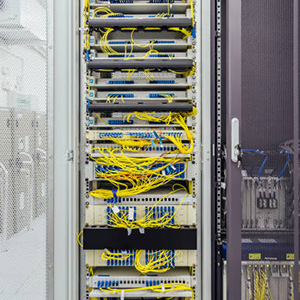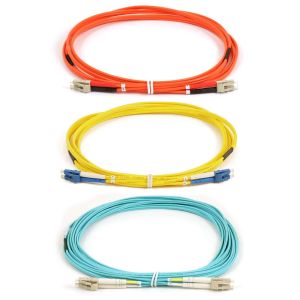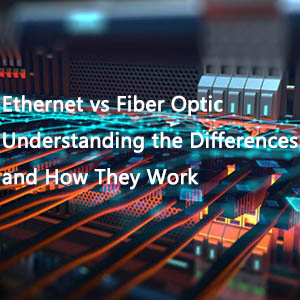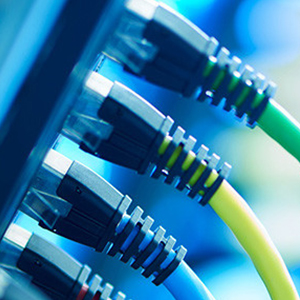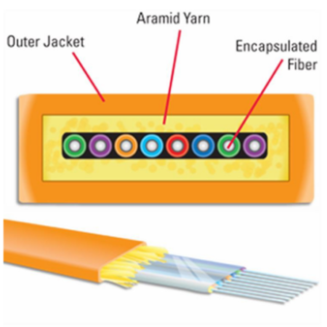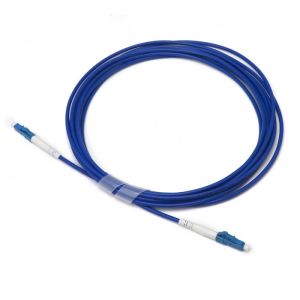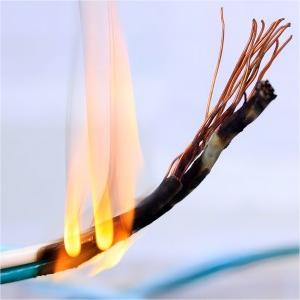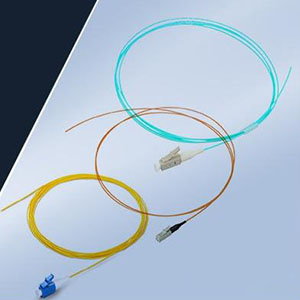Optical fiber optic cables are emerging as pivotal in the race to deploy 5G networks. These networks promise to deliver high-speed, low-latency services with enhanced reliability and robust connections. To achieve this, an extensive build-out of 5G base stations is required, given the higher frequency bands and the need for broader coverage. Projections indicate that by 2025, the global count of 5G base stations will soar to 6.5 million, necessitating superior performance and production standards for optical cables.
Despite ongoing uncertainties in 5G network architectures and technical solution selections, the foundational physical layer demands that 5G fiber optic cables be versatile, catering to current applications and future advancements. Herein, Fiber-Life outline 5 essential fiber optic cables for 5g networks,Let’s take a look together!
Bend Insensitive Fiber Optic Cables for 5G Indoor Micro Base Stations
The intricate fiber connections between numerous macro base stations and indoor micro base stations pose a significant challenge in 5G access network deployment. Indoor environments, with their limited spaces and bend requirements, demand superior fiber bend performance. fiber optic cables that comply with ITU G.657.A2/B2/B3 standards offer exceptional bend performance, allowing for stapling and corner bending without performance degradation.
Many fiber manufacturers have announced bend-insensitive fiber (BIF) cables with low loss to address such problems in 5G indoor applications.
| Company | Product Name | ITU Standards | Bend Radius (1 turn around a mandrel) | Induced Attenuation (dB) |
|---|---|---|---|---|
| Corning | ClearCurve LBL fiber | G.652.D, G.657.A2/B2 | 7.5 mm | ≤ 0.4 |
| YOFC | EasyBand® Ultra BIF | G.652.D, G.657.B3 | 5 mm | ≤ 0.15 |
| Prysmian Group | BendBright XS fiber | G.652.D, G.657.A2/B2 | 7.5 mm | ≤ 0.5 |
OM5 Fiber for 5G Core Networks
Service providers must also prioritize the fiber optic infrastructure within data centers, the repositories of content. As data center transmission speeds evolve from 10G/25G to 200G/400G, new demands arise for multimode optical fibers used in data center interconnections. These fibers must be compatible with existing Ethernet standards, support future upgrades to higher speeds such as 400G and 800G, and accommodate advanced technologies like SWDM and BiDi. The OM5 fiber, with its ability to transmit multiple wavelengths in the 850 nm to 950 nm range, stands out as a preferred choice for data center construction. Utilizing PAM4 modulation and WDM technology, OM5 fiber facilitates 100Gb/s, 200Gb/s, and 400Gb/s transmission over 150 meters, ensuring readiness for future short-distance, high-speed transmission networks.

Micron Diameter Fiber Optic Cables for Enhanced Fiber Density
In the complex deployment scenarios of the 5G bearer network’s access and aggregation layers, challenges such as limited cable pipeline resources are common. Manufacturers are innovating to reduce cable size and diameter to maximize the number of fibers in confined spaces. The Prysmian Group’s BendBright XS 180µm single-mode fiber exemplifies this innovation, allowing for significantly reduced cable dimensions without compromising the traditional 125µm glass diameter.

ULL Fiber with Large Effective Area for Extended 5G Link Length
Manufacturers are advancing ultra low-loss (ULL) fiber optic cable technologies to maximize fiber reach. The G.654.E optical cable, with its larger effective area and ultra-low loss, stands out as an innovative solution for 5G. It mitigates the nonlinear effects of optical fibers and enhances the OSNR, crucial for high-capacity 200G and 400G connections. Corning’s TXF fiber, a G.654.E variant, demonstrates exceptional reach and high-data-rate capabilities, supporting network operators in managing escalating bandwidth demands while reducing overall costs.
Specialty Fiber Optic Cables for Rapid 5G Network Deployment
5G deployment encompasses both indoor and outdoor environments, where installation speed is critical. Full-dry fiber optic cables, leveraging dry water-blocking technology, expedite fiber splicing during installation. Air-blown micro fiber optic cables, compact and lightweight with high fiber density, are designed for efficient installation in ducts with complex geometries, saving on labor and time. For outdoor deployments, cables resistant to rodents and birds are also essential.Shop MTP®/MPO Fiber Optic Cable
Embracing the 5G Era
Fiber optic cables are the optimal medium for scaling to meet 5G demands. The enhanced bandwidth, lower latency, and complex outdoor deployments present both challenges and opportunities for manufacturers. Our optical networks must swiftly adapt to these new demands. While the aforementioned fibers are at the forefront, the industry eagerly anticipates further innovative solutions from 5G fiber manufacturers to meet the evolving market needs.

